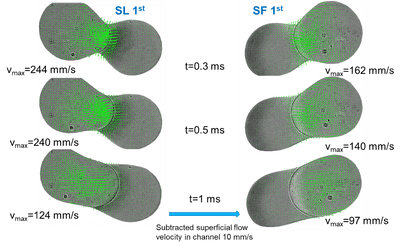Developments in Ghost Particle Velocimetry Technique
Multiphase flows of practical importance involve different time and length scales, complicated time-dependent interfacial geometry, heat and mass transfer with possible adsorption of solutes at the interface and chemical reactions. To validate mathematical models describing these processes, a range of sensitive measurement techniques are required to provide high-quality data.
Ghost particle velocimetry (GPV) is a recently developed technique which enables the probing of multiphase flows on the micrometre (µm) length scale and microsecond (µs) time scale. It uses a speckle pattern generated by the light scattered by nanoparticles smaller than the light diffraction limit (< 300 nm) exploiting standard bright field microscopy. Using nanoparticles results in smaller distortion of the original flow field and enables the mapping of flows close to boundaries and/or interfaces where depletion of tracers usually inhibits measurements. With currently available fast cameras GPV can evaluate velocities up to 1 m/s with a spatial resolution below 10 µm

The aim of this project is the further development of GPV to use it for flow visualisation in micro-reactors and extending it to non-aqueous liquids enabling simultaneous two-phase flow measurements in real-time. Such measurements enable a better understanding of many problems, for example, accounting for forces involved in drop formation and coalescence in the presence of surfactants, including the Marangoni force acting at the interface or convective mass transfer in micro-reactors triggered by drop coalescence.
